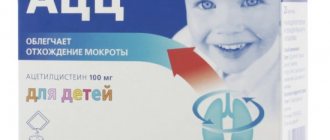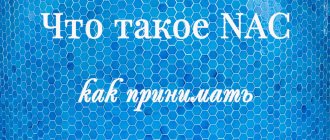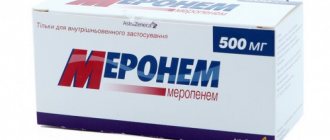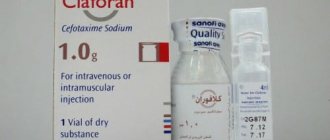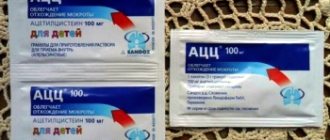Electrophoresis with Karipazim at home is a procedure that has helped thousands of patients avoid surgical treatment of spinal hernia. Despite the fact that the product is now considered outdated, many are still interested in where to buy Karipazim in Moscow in a pharmacy, at what price you can buy Karipazim in Burdenko, how to make Karipazim for procedures.
And, of course, one question remains relevant: what side effects can develop after Karipazim and its analogues?
Karipazim or papain
To avoid any discrepancies and double standards, we will use the official instructions located on the website of the State Register of Medicines (GRLS) of the Russian Federation. It is there that the official document about what Karipazim is is kept. Link to source at the end of the article. Anyone can come in and read.
The drug is papain. It is a natural plant substance related to enzymes. Papain catalyzes the hydrolysis (breakdown) of various protein compounds and is found in papaya, or the fruit of the melon tree. This enzyme is a protein containing about 200 amino acid units, its molecular weight is more than 23 kilodaltons.
Its physical properties, such as solubility in water and ethyl alcohol, make it possible to preserve it and prepare various substrates. In its chemical properties, papain resembles pepsin, which is the main proteolytic, that is, protein-breaking, enzyme of gastric juice. But pepsin is effective in a very acidic environment, and papain exhibits its activity in both acidic and neutral environments. It also works in alkaline solutions and media, but the optimal range of effectiveness is pH 6.5.
How does Karipazim work for intervertebral hernia?
When Karipazim gets on the affected areas, the drug has a selective necrolytic effect. Healthy tissues are practically not affected.
On necrotic areas of connective tissue, Karipazim has a proteolytic effect (destroys dead cells, primarily cells of the nucleus pulposus) and promotes their rapid rejection.
The affected structures of the intervertebral disc are actively scarring. Papain and lysozyme included in the drug help eliminate the inflammatory process. Lysozyme also restores impaired blood circulation, improving nutrition of vertebral structures.
Answers on questions:
Composition, release form and official indications
According to the official instructions, the drug is available in bottles in two different dosages: 350 PE and 700 PE. This corresponds to a twofold difference in enzyme concentration. One of them is more concentrated, the second is weaker. But currently, in the retail network you can only buy a dosage of 350 PE in pharmacies. According to the instructions, the product is used externally only. Karipazim is indicated only for deep burns (IIIa), in order to lyse dead or necrotic tissue. As a result, the burn wound is cleaned and granulation, or healing, occurs more successfully.
According to the instructions, the contents of the bottle must be dissolved in an isotonic solution (0.9% NaCl) or in a solution of novocaine (0.5%), in an amount of 10 ml. The result is solutions containing 35 or 70 PE per milliliter. They impregnate napkins that are applied to the burn surface. Wipes are changed daily, and before replacement, surgical treatment of the wound is performed. The drug facilitates the removal of necrotic tissue. There are no other indications, as well as other methods of use, in the official instructions.
Manufacturers
Above are instructions for Karipazim, which is produced in Moscow, more precisely, in the Moscow region: Serpukhov district, Obolensk village, Industrial site, building number 9. There is also a Georgian Karipazim. For obvious reasons related to the deterioration of international relations between the Russian Federation and Georgia, since March 2007, the Georgian-made drug has ceased to be supplied to Russia.
There is unverified information that since April 2021, Georgian-made Karipazim, from the Kutateladze Institute of Pharmacochemistry, has again been supplied to Russia. This is an official drug, cleared by customs, with the required registration certificate.
But in 2021, in various pharmacy chains you can buy Karipazim produced by the pharmaceutical company, which is none other than Medflorina LLC, which produces this drug in the Serpukhov region, the owner of the registration certificate. In 2021, lyophilisate for external use with a dosage of 350 PE can be purchased at an average price of 113 rubles per bottle, and for a package of 10 bottles you need to pay 1,438 rubles. This is a rather unusual situation when a small wholesale costs more than the retail price for one bottle. Karipazim ampoules are not produced, and the product is not sold in solution.
There are also local preparations with papain (ointment, gel), but they will be discussed in other articles.
Price of the drug, where it is sold
Karipazim can be purchased in pharmacies, or ordered on the websites of pharmacological online stores. The price depends on both the manufacturer of the drug and the pharmaceutical retailer. On average, the price of Karipazim is 580 rubles.
Features of the sale of Karipazim
Karipazim can be purchased in pharmacies with a doctor's prescription, since the medicine belongs to the group of potent drugs. That is why, if problems with the back and joints are detected, it is necessary to undergo an examination, consult a specialist and prescribe a course of therapy.
Treatment of spinal hernia with Karipazim
Treatment (more precisely, an attempt to influence something) on intervertebral hernias with the help of Karipazim is carried out by electrophoresis. No injections or pricks are used. Electrophoresis is a physical procedure in which a solution of a medicinal substance is able to move in a given direction in biological tissues, according to a potential difference under the influence of a direct electric current.
Electrophoresis procedure.
The duration of the course, which is recommended as the best and most effective, is 3 courses of treatment (30 procedures every day in each course), the break between courses is 1 or 2 months. Thus, the total duration can reach 9 months!
The procedure is carried out as follows:
- the electrodes are immersed in warm water at body temperature;
- one bottle of Karipazim dissolves in 10 ml. isotonic solution, and applied to the positive electrode, where two drops of Dimexide are added;
- 10 ml is poured onto the negative electrode. Eufillin solution, 2.4%;
- the electrodes are placed in different ways. Thus, in case of a hernia of the lumbar spine, the electrode with Karipazim is located on the lower back, in the projection of the hernia, and the negative electrode with aminophylline is located on the stomach. This technique is called transverse;
- the electrodes are fixed on top;
- the electrodes are connected to the device, and an electric current of 5 to 10 milliamps is applied for an exposure time of 10 to 20 minutes.
Each session the duration gradually increases. The course starts with a 10-minute exposure and ends with a 20-minute exposure. During the procedure, according to the laws of physics, current flows “from plus to minus” and carries papaya extract deep into the tissues. First through the skin, then through the subcutaneous tissue, fascia, back muscles, reaches deep ligaments, vertebrae, penetrates the intervertebral foramina, then into the intervertebral discs. No one knows where Karipazim is moving next. How deeply it penetrates is also unknown.
The source of such a technique, which is not related to the official testimony of Karipazim, is the department of neurorehabilitation of the N. Burdenko Research Institute of Neurosurgery, or more precisely, prof. V.L. Naidin and co-authors (Bobkov Yu.G., Yurischev P.E.). The corresponding patent No. 2141359 was published on November 20, 1999. What does this document say?
Research Institute of Neurosurgery named after N. Burdenko.
To carry out a course of procedures at home you will need:
- electrophoresis device
- reusable flannel (carbon fiber) pads (the size is selected by the doctor) - 2 pieces. There is a conductive layer inside the gaskets, that is, the current will pass over the entire area of the gasket. One of the gaskets should be marked with a “+” sign; Karipazim should always be applied only to THIS gasket. The pads are machine washable
- disposable electrode pads made of filter paper
- water thermometer, pipette
- Karipazim (Karipain, Karipain-plus) - 30 bottles, physiological solution (NaCl 0.9% solution) 10 ml each - 30 ampoules (or 1 bottle 400 ml), dimexide - 1 bottle, aminophylline 2.4% - 10 ml - 30 ampoules - purchased at the pharmacy
- brochure “Medicinal electrophoresis” - will be required if you plan to use the Elfor device in the future for other types of treatment
- undergo one training session of electrophoresis with Karipazim in our center. It is advisable to come to the session together with a person who will help you at home during the procedure
Patent examination
The authors of the patent application stated that:
- electrophoresis with Karipazim increases the effectiveness of treatment. Accordingly, the procedure is not the main method of treatment, as follows from the document;
- this invention (methodology) is used for the treatment of pathology in which the scar-adhesive process is active (when a hernia is formed, cartilage is destroyed, that is, a process of a completely different kind);
- accordingly, we are talking about soft tissues, for example, the ligaments of the spine, the membranes of the brain and spinal cord, peripheral nerves or roots. In this case, keloid or cicatricial adhesive tissue actually contains a large amount of protein, since the inflammatory exudate, consisting of proteins, is gradually organized and a scar is formed. There was no mention of cartilage tissue in the application;
- the authors of the application studied options for using electrophoresis for radiculitis, pain syndromes of osteochondrosis, neuritis of the facial nerve, cerebral arachnoiditis and other pathologies;
- The authors found that: (quote with spelling and style preserved) “when conducting a course of less than 20 procedures, due to the slow action of Karipazim’s proteolytic enzymes, it is ineffective; more than 30 procedures can cause allergic reactions.”
Accordingly, the therapeutic scope of this method is quite narrow. The authors of the patent application thereby indirectly confirm that if a patient undergoes 19 sessions, it will be in vain, and if the number of procedures exceeds 30, then they can be harmful.
Allergic reactions mean such side effects as the presence of skin itching at the site of attachment of the positive electrode, increased body temperature, and burning. In this case, it is recommended to stop further sessions and treat the electrode location with hydrocortisone ointment.
Translating this into the language of pharmacoeconomics, taking into account the average cost of packaging, we can calculate that:
- if a patient spends less than 2876 rubles on treatment, then the money will be wasted, and if he pays more than 4300 rubles for treatment, then he may experience complications in the form of allergic reactions. If you take three courses, then the optimum is from 8,600 to 12,900 rubles.
Next, the authors of the patent application give five examples of the use of this technique, in which “as if by chance” facts of strange behavior of disks are given:
- in the first case, the patient’s neurological symptoms disappeared, the height of the L3 - S1 discs increased, the size of the L5 S1 hernia decreased, from 8 to 4 mm;
- in the second patient with cervical osteochondrosis, the C6-C7 disc herniation decreased from 6 mm to 4 mm.
In the future, the authors of the patent do not comment or explain these two facts, which, of course, cannot in any way serve as evidence of the effect of the drug on the hernia. Even if we remove all other arguments and arguments (lack of targeted studies, recruitment of a control group, MRI - high-resolution tomograph, etc.), then any substance cannot simultaneously increase the height of the intervertebral discs, that is, work “plus”, and at the same time reduce the size of its parts, that is, the hernia, working “in minus”. Simultaneously, the opposite effect on the same structure with the same substance is logically impossible, under the same conditions of existence of the hernia and the disc.
Based on logic and common sense, what effect will there be if you perform electrophoresis with Karipazim on the area of a healthy intervertebral disc? It turns out that it will also decrease? Or, if a healthy disc increases in size, why then does the part that makes up the herniation not increase?
Side effects of Karipazim
Karipazim is a natural herbal preparation. Therefore, the number of side effects is minimal:
- Temperature rise.
- The occurrence of local allergic reactions.
- Feeling of itching and burning in the area of application.
The rise in body temperature when using Karipazim is due to a temporary increase in the inflammatory process (a well-known effect when a reverse effect is observed from the first sessions of physiotherapy). Blood flows to the damaged area more actively.
Local allergic reactions occur due to individual intolerance to the enzymes included in the drug.
Itching and burning when using the drug are the result of activation of the nerve endings of the epidermis by papain. Also, discomfort can be caused by excessive production of the itching mediator, histamine.
On the subject: The use of chondroprotectors for hernia - a list of drugs, are they effective at all?
Disappointing results
So, summarizing all of the above, we can draw the following conclusions:
- Indeed, there is a drug called Karipazim, a patent application and patent registration, but this drug and the corresponding electrophoresis technique are separated by instructions. Karipazim is used in complex treatment and helps dissolve protein compounds, keloid scars and adhesions, but is not and cannot be used for the destruction and reduction of intervertebral hernias;
- The patent for the invention itself is called very vaguely, namely: “a method for treating neurological and orthopedic-traumatological pathologies.” Nothing is said here about herniated intervertebral discs and the method of their radical treatment;
- According to their physicochemical properties, proteolytic enzymes, including papain, dissolve proteins, which is described in the patent application. But glycosaminoglycans, the basis of cartilage tissue, do not consist of amino acid residues, but are polysaccharides in structure. Therefore, proteolytic enzymes are powerless to change the structure of mucopolysaccharides that make up cartilage. From this simple biochemical fact follows the complete inconsistency of using Karipazim for the treatment of intervertebral hernias;
- the technique itself is not the use of Karipazim in its pure form, since from the opposite side Eufillin enters the body, as well as, albeit in small quantities, Dimexide. No tables, mathematical calculations of concentration, or other quantitative evidence of the choice of these particular drugs were provided in the patent application. Everything was on an empirical level;
- The official instructions for the drug do not have such indications as use in neurology and orthopedics, since it is registered only
as a means of cleansing wounds from burns. It can be used in any other way only at your own peril and risk, up to the criminal liability of the doctor in case of harm to the patient’s health; in fact, the use of Karipazim for all purposes other than burns is a contraindication, and a gross violation of the instructions, from the point of view of the letter of the law. Therefore, expanding the indications by filing a patent (and registering it) should have automatically entailed conducting evidence-based studies and re-registration of Karipazim with new, expanded indications. This did not happen, and the existing illegal treatment of disc herniations with Karipazim is a potential threat of lawsuits against private healthcare facilities; - Data on Karipazim as a drug for the treatment of intervertebral hernias are unknown in countries with developed medicine. This drug is not used for electrophoresis or for any other manipulations either in the USA or in Western Europe. The world community, for example, knows that clinics in the Czech Republic treat patients with herniated intervertebral discs at the world level, but that Karipazim is used in leading clinics in Israel is a fiction;
- Karipazim is used only by doctors and patients living in the countries of the former USSR. There are no studies in reputable foreign journals, no recommendations from the World Health Organization (WHO), no mentions in Cochrane reviews or other authoritative sources about this drug;
- a treatment method that involves long periods of time (90 sessions at intervals of months, up to 9 months) has a very high probability that there will be an independent and spontaneous reduction in pain and an increase in the range of motion in the back, especially in the case of joint use of other methods treatment;
- From a histochemical point of view, it is unclear why Karipazim exerts its healing effect only far in the depths, between the vertebrae, on cartilage tissue, which does not consist of protein. Why doesn’t it have any effect on other healthy tissues that contain a large amount of protein and lie superficially? These are skin, subcutaneous tissue, ligaments and muscles. If Karipazim dissolves proteins so well, then it should react with the surface of the skin, causing proteolysis of its proteins, and “fizzle out” long before penetrating into the vertebrae.
In conclusion of this short article, we can say that the use of electrophoresis sessions with Karipazim for the treatment of intervertebral hernia is always carried out in private centers, and it is never provided in public clinics under the compulsory health insurance policy. This means that this type of effect on the patient’s body will be beneficial for pharmaceutical companies only if it is actively promoted by a doctor.
Of course, no one has canceled or is canceling the effect of placebo, and the more expensive the price for the drug, the more sophisticated the unusual method of its administration, the more self-hypnosis the patient experiences. The change in mental perception of pain can be very significant, up to the complete disappearance of pain and psychogenic anesthesia. We all remember very well how Anatoly Kashpirovsky, putting the patient into a trance, maintained full contact with her, including speech, while she was undergoing breast surgery without anesthesia, and this was broadcast on television.
Therefore, proven methods should really be considered the main ones in the treatment of hernias. In the case of conservative treatment, this includes traction, therapeutic exercises, diet, normalization of body weight, swimming, and therapeutic blockades. If conservative treatment is ineffective, these are operations, the best of which is complete removal of the hernia with disc replacement. Modern polymer materials make it possible to completely restore volume and freedom of movement, and the service life of the artificial disc is estimated at many tens of years.

